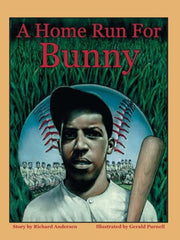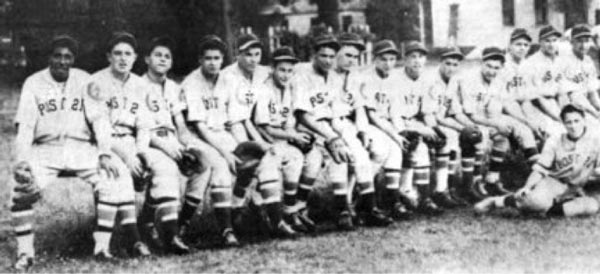Secure Checkout + FREE SHIPPING (U.S. Orders over $60)
Menu
-
- Home
-
About Us
-
The Approach
-
Linking Language & Literacy
-
Professional Learning
-
Learning Resources
-
SHOP
-
Blog
-
- About MindWing
- Our People
- Contact Us
- Your Account
- Login
-
United States (USD $)

Secure Checkout + FREE SHIPPING (U.S. Orders over $60)
Blending Narrative and Expository Texts and Building Rigor
by Sheila Moreau February 12, 2016 3 min read 2 Comments
Black History Month Lesson 2
 A large focus for us this year is to share how to use Story Grammar Marker® methodology for both Narrative and Expository text selections. As a manner of best practice, Maryellen Moreau, creator of the Story Grammar Marker® has always paired narrative and expository texts together in her workshops. Camp (2000) introduced a concept called “twin texts” describing a way to pair books together. “Twin texts” are two books, one fiction and one non-fiction that are presented together in a lesson to get children excited about learning and activate prior knowledge. (examples, above right) “Teachers can integrate language arts, science, social studies, and other content areas by using children’s literature as a bridge” (Camp, 2000, p. 400). This pairing of twin texts improves comprehension in three ways: “building background knowledge, developing text-related vocabulary and increasing motivation to explore the topic under discussion” (Soalt, 2005, p.680).
A large focus for us this year is to share how to use Story Grammar Marker® methodology for both Narrative and Expository text selections. As a manner of best practice, Maryellen Moreau, creator of the Story Grammar Marker® has always paired narrative and expository texts together in her workshops. Camp (2000) introduced a concept called “twin texts” describing a way to pair books together. “Twin texts” are two books, one fiction and one non-fiction that are presented together in a lesson to get children excited about learning and activate prior knowledge. (examples, above right) “Teachers can integrate language arts, science, social studies, and other content areas by using children’s literature as a bridge” (Camp, 2000, p. 400). This pairing of twin texts improves comprehension in three ways: “building background knowledge, developing text-related vocabulary and increasing motivation to explore the topic under discussion” (Soalt, 2005, p.680).
Another avenue for this idea of blending narrative and expository text is through “historical fiction” which integrates aspects of social studies right in with a story. The characters and the plot are fictitious, but the setting (time period, place and what usually happens there) are real. This setting may include historical figures, social conditions, clothing, lifestyles, foods, transportation, customs, cultures, etc. Examples of this type of literature are:

This helps children transition from narrative to expository text and to “realize that both types of text structure can be interesting, informational and meaningful” (Sanacore, 1990, p. 3).
There are also novels, children’s books, plays, TV shows and movies that are in the category of “based on a true story.” They are narratives that contain real characters in real settings and the story is constructed around the facts of an experience, event or a situation. Sometimes authors, playwrights or screen writers take artistic/creative/dramatic license in telling the story. Since this is Black History Month, here are some examples of blockbuster movies in this category:

For our next Black History Month lesson, we are going to share a true story with you that can be used for a lesson. We are using the following book because it has deep roots and meaning for our community in Springfield, Massachusetts. The book is set eighty-two years ago and shows the championing of the human spirit. The incident, or situation to be understood, occurred at a time very different from the present. Amazon.com’s summary is: “The true story of an all-star baseball team from Springfield, Massachusetts. When racial prejudice threatens to keep Bunny off the field, the team must choose to follow their dream of playing in the championship or to stand up for their teammate.”

Below is a photo of the 1934 all-star baseball team from Springfield, MA. “Looking back now, nothing we did on any ball field compares with what we did on August 23, 1934. Long before anyone had ever heard of Jackie Robinson, a team of fifteen-year-old kids from Springfield, Massachusetts, chose loyalty and respect over championships. Without swinging a single bat, we’d hit a home run—not just for Bunny, but for people everywhere.” You may purchase A Home Run for Bunny at Amazon Books.

Sheila Moreau
Sheila M. Moreau, M.Ed. is vice president at MindWing Concepts. Her Bachelor’s degree in Psychology is from St. Anselm College and Master’s of Education degree from Cambridge College. Sheila has twenty years of experience in marketing and sales in the telecommunications, commercial real estate, fundraising and educational publishing industries. Sheila co-authored The Essential SGM® with Maryellen Moreau, drawing upon her experience in her graduate studies. Sheila was on the Early Literacy Advisory Board of Cherish Every Child (Irene E. and George A. Davis Foundation),; she sits on the Board of Directors for the International VolleyBall Hall of Fame and serves as Co-Chair of Marketing and Sponsorship for the St. Patrick’s Committee of Holyoke, Inc.
2 Responses
Beth Renola
January 30, 2021
HI! I remember doing this lesson with you! The link posted is not working, Is there a different place we can access??
Thanks!! Beth
Leave a comment.
Comments will be approved before showing up.

William W Noss
January 30, 2021
Beth, Advanceweb.com has changed ownership, quite some time ago, and we still have not received an answer about re-linking our videos and documents. We’ll re-link if possible, and will keep re-visiting this problem.—Webmaster